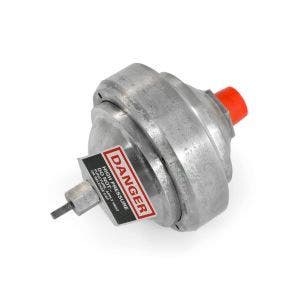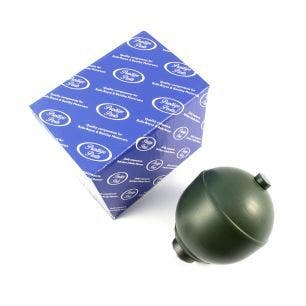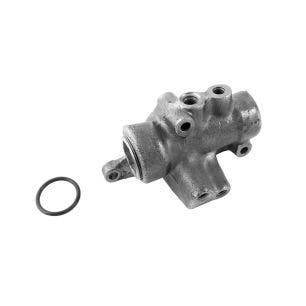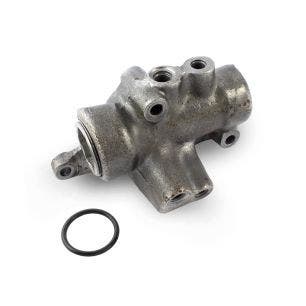Matt demonstrates a simple pressure test that can be performed on all Rolls-Royce & Bentley models from the end of the Rolls-Royce Silver Cloud, when the first Silver Shadows started to come out, all the way to Pre-Arnage models.
It's an easy test you can perform yourself to find out whether your valve bodies are holding pressure and / or if your spheres have any gas in them.
Related Accumulators:
- RH2343SX
- RH2390SX
- CD6000GMF
Related Valve Bodies:
- UE39519
- UE37583SX
- CD5999GMF
Today we are demonstrating how you can check the system pressure of your car without any special tools... Just using the information from the dashboard and from the brake pressure switches. You do rely on the brake pressure switches working properly, but it's an easy way to see what the system's doing and whether you need to change anything and whether your valve bodies are holding pressure and your spheres have any gas in them.
Firstly you need to run the system up to full pressure. That means to run your engine for enough time that the brake pumps have built up the pressure to full system pressure. So 2,500 PSI, and then turn the engine off.
That will mean that no extra pressure will be added to the system, just what you've got stored in the valve bodies. So then put the ignition back on without running the engine. That will mean that when the pressure does fall below the brake switch pressure, the lights will come on.
So to do that, pump the pedal repeatedly, which will decrease the pressure in the system each time you pump. The the more pressure in your spheres, the more pumps you will get before the lights come on.
If you only get 10 or 20 pumps, then you haven't got enough pressure in your spheres and you risk brake failure on the road. Usually it should be 50 to 60 pumps. Now the videos that we have released recently have shown a Brake Pump from a Silver Shadow however this is a later car - a Bentley Brooklands. This uses mineral oil, (LHM plus) mineral oil and not RR363 brake fluid.
It is extremely important not to mix the two, but the principle is the same, there are two Brake Pumps driven by the camshaft that feed pressure to a Valve Body Regulator, and they have a Sphere or Accumulator screwed into the Valve Body with a diaphragm, with gas pressure on one side, and as the pumps produce pressure into the valve body that presses against the diaphragm, which is your reserve of pressure.
If you didn't have the spheres or the accumulators and you pressurized the system and there was no reserve of pressure, then as soon as you touch the brakes, you're going to lose all that pressure because you can't compress a liquid.
So that is the job of the spheres. What tends to happen is that the diaphragms can split over time then the pressure is lost and you've got no reserve of pressure. What will then happen is that you run the engine, it will go to full pressure. The lights will go off. It will look like you've got full pressure and as soon as you press the brakes, the lights will come back on.
So, we are going to show you what it should look like and how you can check. I will take you over the dashboard to show you the lights on the dash and show you what it should look like.
So, here is the dashboard on our Bentley Brooklands.
This car has been sat for a few days, so it's likely that the pressure in the system has fallen because the valve bodies over time (the non-return valve) will let go and will lose pressure. I have put ignition on first. There you can see the systems check: the brake stop light is flashing and the brake pressure warning light is on. So that means there is not enough pressure in the system at the moment to reset the, to set the lights 'off'.
Now, we will start the engine. I am going to hold the revs up to run the brake pumps a little bit faster. Now, one of the lights has gone off. There is still a warning light on, but I am continuing to hold the revs up until both lights go. Now, taking the Parking Brake off.
Next, now all Brake Pressure lights are off and we're going to leave it running a little bit longer. It doesn't mean it's reached full system pressure just because the lights have gone off.
So we are going to assume that that's fully pressurized now as it has been running for a little while. Now I am going to turn the engine off which means that no more pressure is able to be supplied to the valve bodies.
Put the ignition back on and as you can see, there are no pressure lights on. We are not going to run the engine because we do not want to add any more pressure to the systems. Now, I am going to start pressing the pedal. You can hear me pressing the pedal all the way down, on and off again, continuously.
So that is about 50 pumps and the brake pressure light is back on which is not bad - there is enough pressure in the system - enough pressure in the spheres that you could get 50 pumps of the pedal before the light came on.
And if we start it again now, the light's gone straight off again so it's obviously just building up pressure again, and that that's not an issue. So, that's what you're looking for - at least 50 pumps. If it's coming on straight away, then you need to be very careful.
Now, I can't remember on this car, whether it does anything differently for system 1 and system 2... if you've got a Rolls-Royce Silver Shadow, then you will have two systems and you can actually determine which system is low on pressure. So that's how you can test the brake pressure system on your car as long as your Brake Pressure switches are working as they should!



.jpg)



